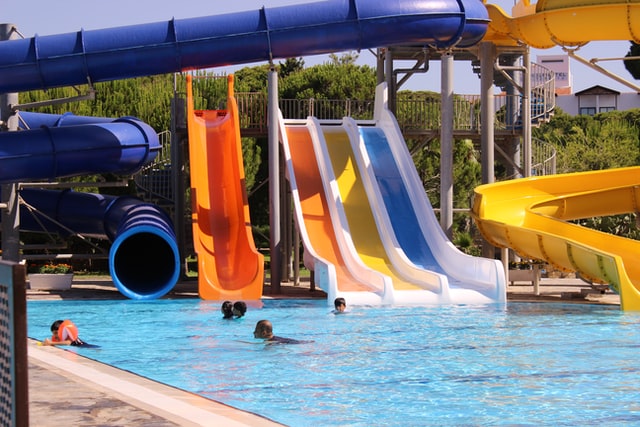 Every year, millions of people flock to our nation’s 1,000+ water parks. Unfortunately, for some, fun in the sun can turn into injury and illness. Fatal injuries can also occur at waterparks, although they are rare. However, anywhere there is water, drowning is always a frightening possibility.
Every year, millions of people flock to our nation’s 1,000+ water parks. Unfortunately, for some, fun in the sun can turn into injury and illness. Fatal injuries can also occur at waterparks, although they are rare. However, anywhere there is water, drowning is always a frightening possibility.
Common Water Park Injuries
Certain injuries occur at water parks on a regular basis. They include:
• torn ligaments
• dislocated joints
• soft tissue injuries
• cuts and lacerations
• fractures
• broken or dislocated bones
• head, neck, and back injuries
• spinal cord injuries
• whiplash
• brain aneurysms
• traumatic brain injuries (TBI)
Water Park Acquired Illnesses
In addition to causing injuries, water parks can also cause recreational water illnesses (RWIs). They are found in water that is contaminated by germs or chemicals. RWIs are contracted by swallowing, breathing in mists or aerosols of, or having contact with contaminated water.
Some pathogens which may be present at water parks include:
Cryptosporidium
This parasite spreads through human feces and can cause stomach pain, fever, nausea, vomiting, diarrhea, and weight loss. The symptoms usually appear days after the initial contact.
Legionella bacteria
This organism enters the body through small water droplets, typically in the form of mist. When the water park pumps that release the mist are not properly cleaned and disinfected, infected water droplets can get into lungs and respiratory system. This can lead to a serious, even fatal type of pneumonia known as Legionnaires’ disease.
Hepatitis A
This pathogen is typically spread through contamination of water with fecal matter. It can cause symptoms that include fever, liver pain, rash, fatigue, and yellowish skin.
Naegleria fowleri
In 2019, an unusually high level of this pathogen (commonly referred to as the “brain-eating ameba”) was detected at a North Carolina water park where a park visitor became infected and later died. The ameba usually infects people when contaminated water enters the body through the nose. Once the ameba enters the nose, it travels to the brain where it causes primary amebic meningoencephalitis (PAM), a rare disease which has a mortality rate of 95%. In 2021, a 3-year-old boy became ill after playing at a Texas splash pad. He was diagnosed with PAM and died less than a week later.
Dangers Posed by Common Water Park Attractions
Attractions at water parks can present their own unique risks.
swimming pools
Pools at water parks can be very crowded and have too much activity at any given moment. There may not be enough lifeguards to watch over everyone, leading to mistakes, and increasing the risk of drowning.
wave pools
These attractions are packed with people of all sizes and ages bumping into each other and toppling over. The water is often deeper than children’s heads, making them more vulnerable to the dangers.
water slides
Risks posed by water slides include hitting the sides of the slide, and colliding with others at the bottom of the slide, and ingesting water. The most dangerous scenario is falling off the slide, which can cause life-altering or even fatal injuries.
flume rides
Flume rides can appear to be safe, but they have the potential to cause serious injuries. Fun can unexpectedly turn to trouble, as was the case when two children were thrown from a water park’s flume log at the bottom of the slope when it got stuck to the conveyor belt.
lazy rivers
These attractions are supposed to provide a leisurely ride, gently floating along a pool stream. Unfortunately, lazy rivers are notoriously overcrowded with people splashing and rough-housing. Small children may panic when they cannot control their tube or float away from their parents.
water buckets
These buckets spill up to 500 gallons of water on people directly underneath it. The force can result in small children being knocked down or swallowing and inhaling water.
Common Causes of Water Park Accidents
• Mechanical failures
• Improper operation of the rides
• Design flaws
• Manufacturing defects
• Rider negligence
• Poor maintenance
Who is Liable for Water Park Injuries?
Multiple parties may be responsible for a water park injury or illness. Defendants may include:
• water park’s parent company
• water park owner
• water park operator
• water park supervisors
• water park employees
• water park’s insurance company
• lifeguards
• safety trainers
• other water park patrons
• third-parties who service rides
• ride designer
• ride engineers
• ride manufacturer
To speak with a knowledgeable personal injury attorney, call Comitz Law at 570-829-1111 or email info@comitzlaw.com.


